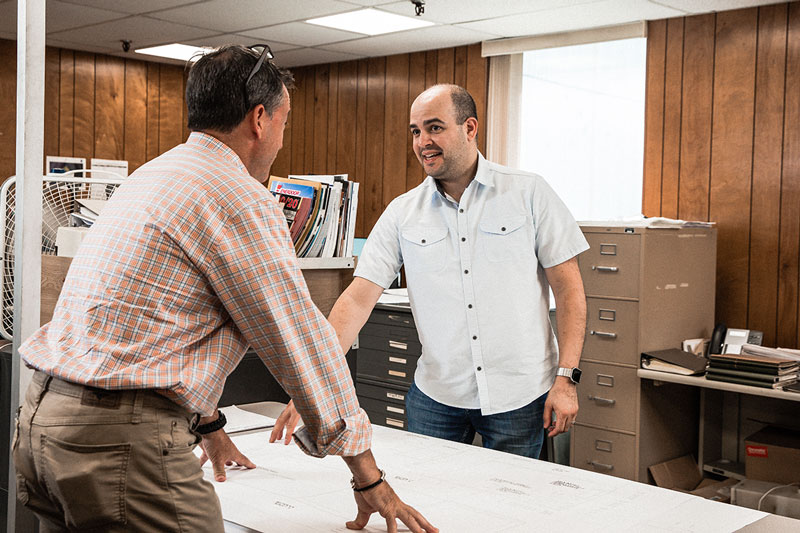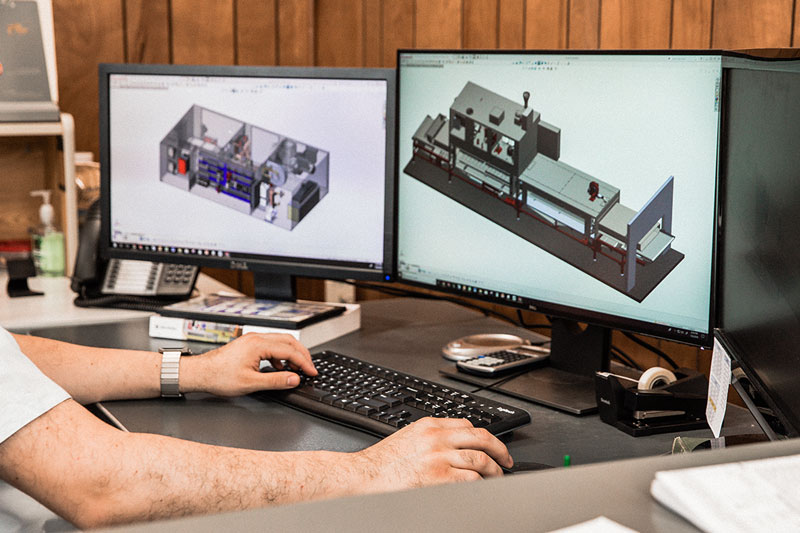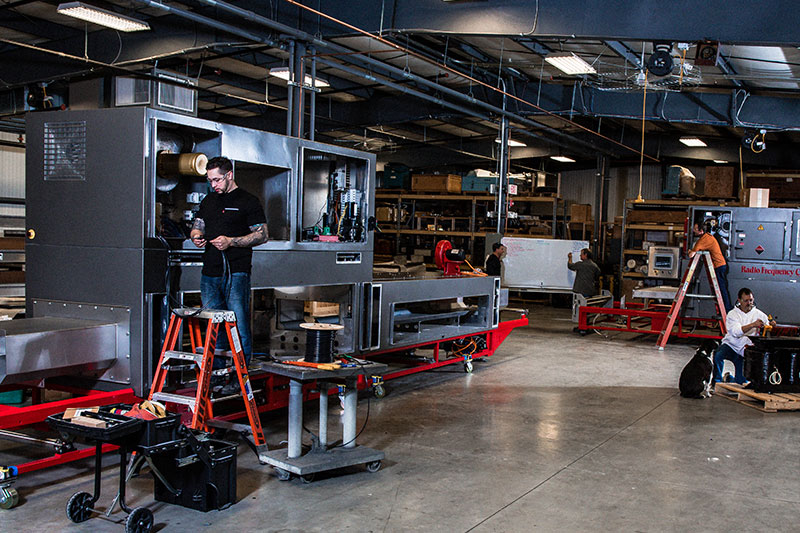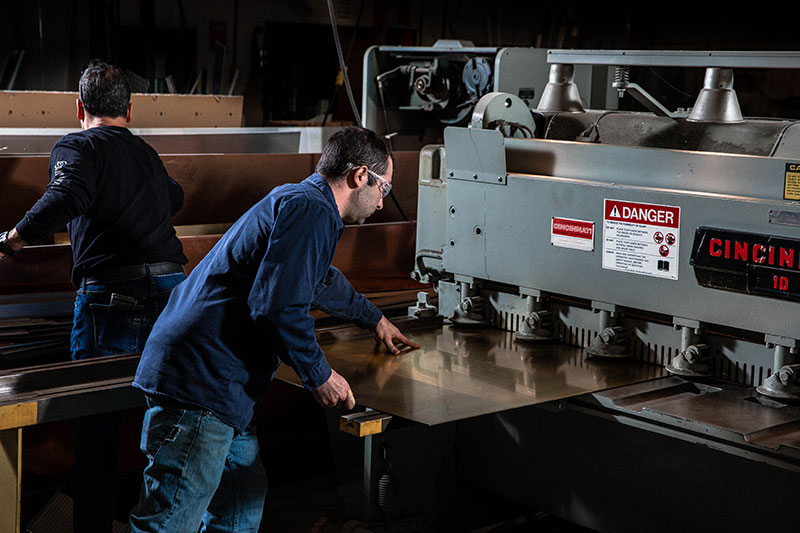
About
Founded in 1946, RFC is a closely held and financially stable private corporation. Located on a 19 acre site, its facilities include a 40,000 square foot plant and an RF test range used to verify that its equipment operates within U. S., FCC, CE and world-wide RF emission standards.
The RFC Macrowave™ Systems Division is a single source for standard and fully automated RF heating and drying systems. Under one roof, the company designs and builds RF generators, applicators, automated handling systems, system instrumentation packages, and programmable logic control systems. RFC’s competent staff provides turnkey installation supervision plus field service, telephone consultation, and spare parts for over 3,000 systems in operation around the world.
The company has produced dielectric heating systems for a broad range of applications ranging in size to 1000kW output. Many of the RFC systems in the field today, were “firsts” developed on the basis of feasibility studies conducted in the company’s applications laboratory.
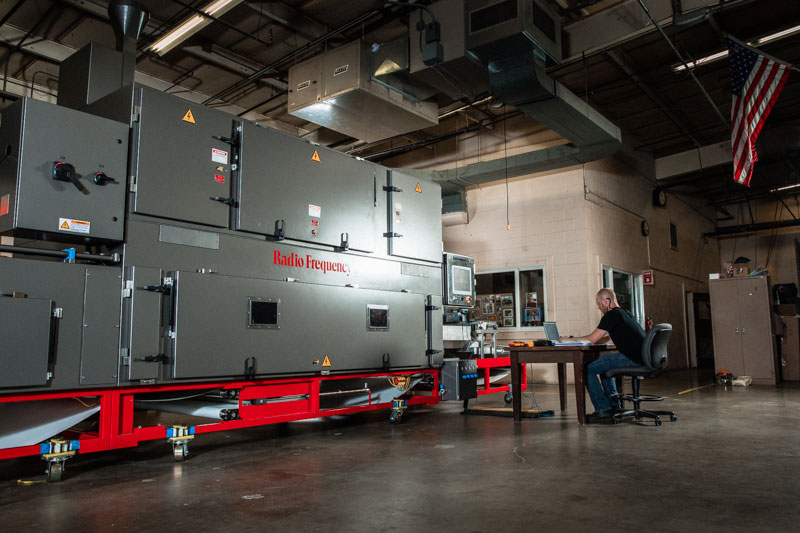
APPLICATIONS
Conventional heating relies on conduction to transfer heat to the center of the material which can be a slow process and cause undesireable surface effects. By contrast, RF heating occurs simultaneously throughout the thickness of the material providing fast and uniform heating.
Some of the many applications which employ Macrowave™ heating are listed below:
- Post-baking drying and moisture control of biscuits & crackers and other food products
- De-infestation of meal, flour grains, seeds, beans, heat treating, de-infestation and pasteurization of bagged materials and bulk
- Drying of ceramic greenware prior to firing
- Drying hydrophilic foams
- Drying of textile yarns, fabrics, and garments
- Drying of water-based coatings, inks, and adhesives on webs in paper manufacturing and converting
- Drying and moisture leveling of webs, sheets, and boards
- Drying and moisture leveling of bulk materials
- Pre-heating of thermoset sheet molding compounds prior to molding
- Drying of fiberglass yarn and chopped strand
- Drying water-based inks
- Sterilization of medical wastes
- Drying filter cake
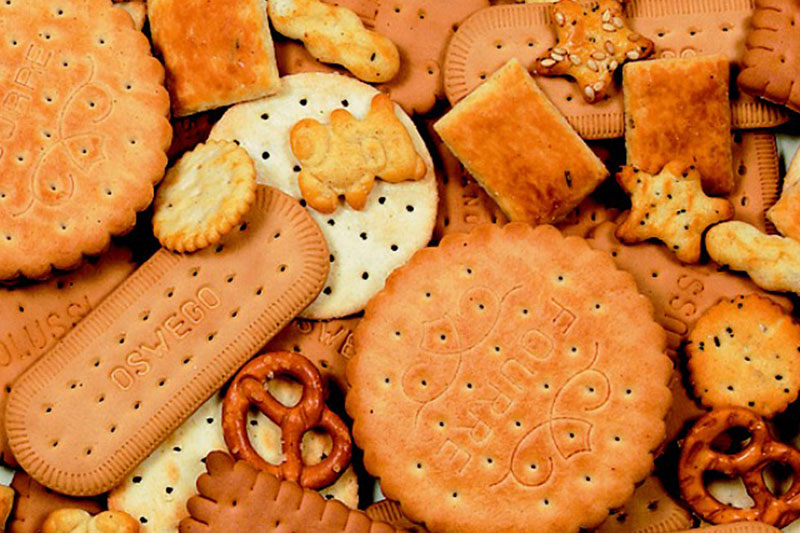
ADVANTAGES OF MACROWAVE™ HEATING
Speed & Uniformity:
Heating occurs instantly and uniformly throughout the mass of a homogeneous material. No temperature differential is required to force heat via conduction from the surface to the center as in convection or infrared heating processes.
Selective Heating:
Heating will occur selectively in those areas where heat is needed because water, unpolymerized synthetic resins and uncured latices are much more responsive to RF energy than most other dielectric materials.
Moisture Equilibration:
Because wetter areas absorb more RF power than dryer areas, more water is automatically removed from wet areas resulting in a more uniform moisture distribution.
Space Saving:
The applicator, or electrode section, is slightly wider than the load itself. Length will be a small fraction of the length of the convection dryer required to do the same work. Special applicator designs may be used, multi-pass, multi-zone, arched, inclined, or vertical.
Physical Contact:
The load may be supported by electrodes or conveyed under or between them. Self-supporting webs or strands need not touch anything, thus avoiding surface marking and contamination.
Efficiency:
Power is consumed primarily in the work load. There are no losses from heating masses of cast iron or huge volumes of hot air — no long warm up or cooling times are required. Power is consumed only when the load is present and only in proportion to the load.
Precise Control:
Power control is accurately metered and may be recorded. A meter constantly displays the amount of power being applied to heat the product.
Quick Response:
The full range of power control from minimum to maximum is traversed in seconds. Adjustments take effect immediately. Thermal lag time is zero. Automatic changes in power level due to physical properties or size of load are instantaneous.
Self-Limited Heating:
When a dielectric material is polymerized, dried, or cured, its loss factor is lowered, reducing its response to RF energy. RF heating is, therefore, automatically limited to the level required to complete the process.
Process Feedback:
The RF heater is actually a very sensitive moisture meter. Its power output is a measure of the average moisture content of the load. Changes in power output, as indicated by the plate current meter, can be used to trigger alarms or provide feedback signals for process control.




